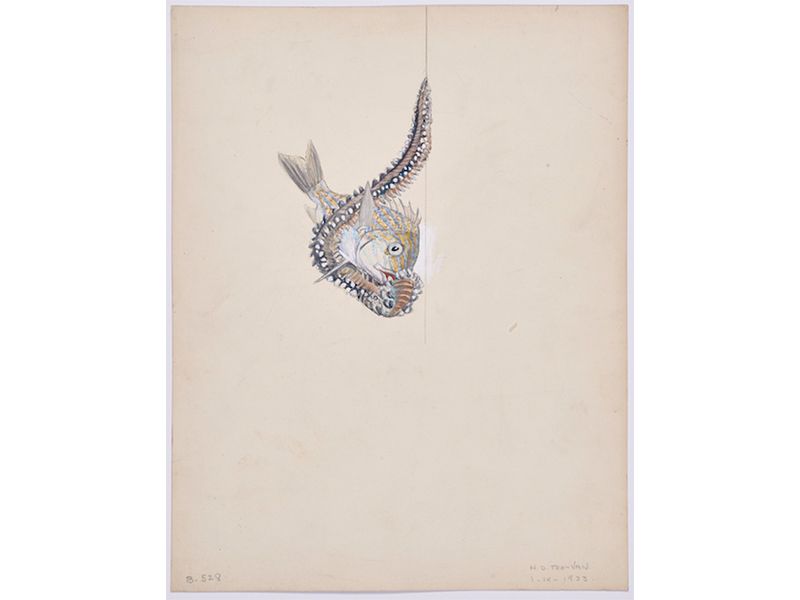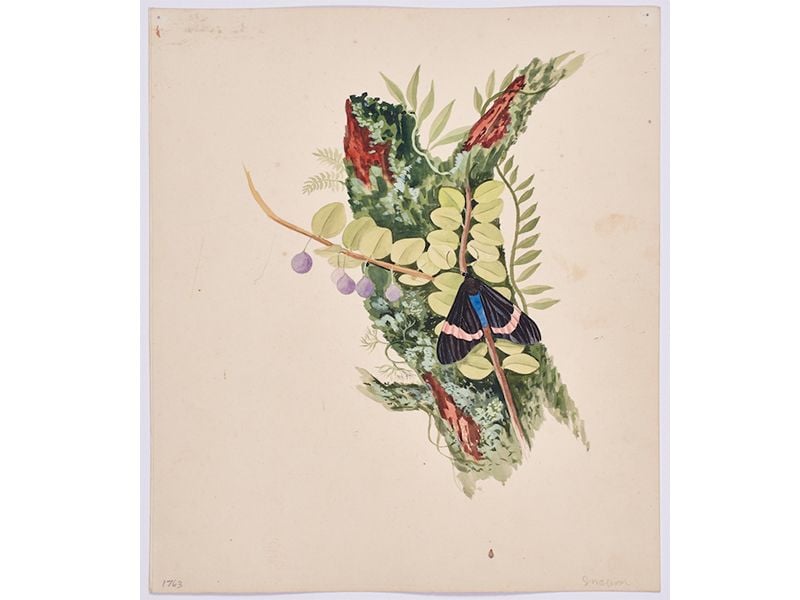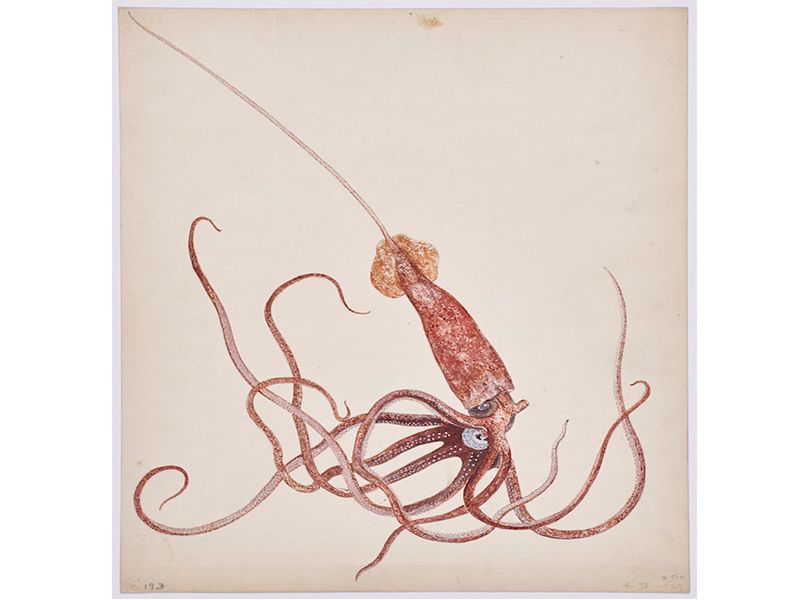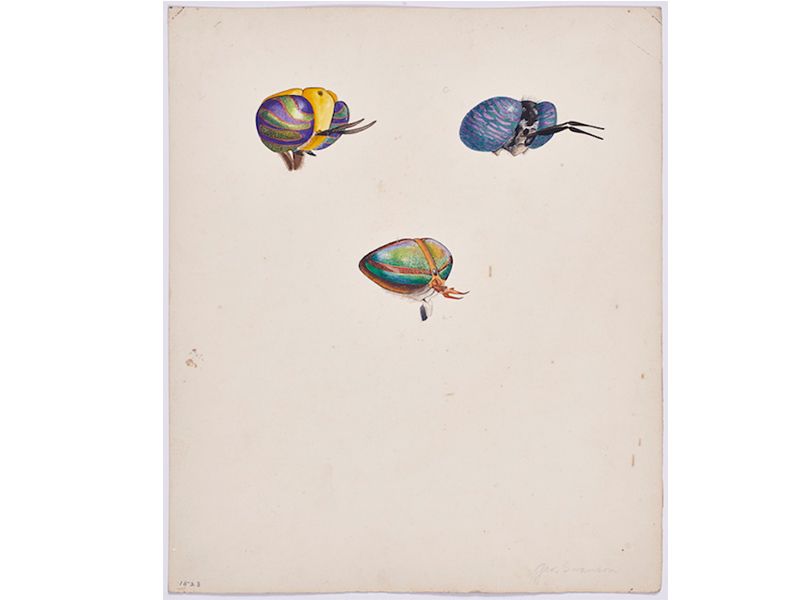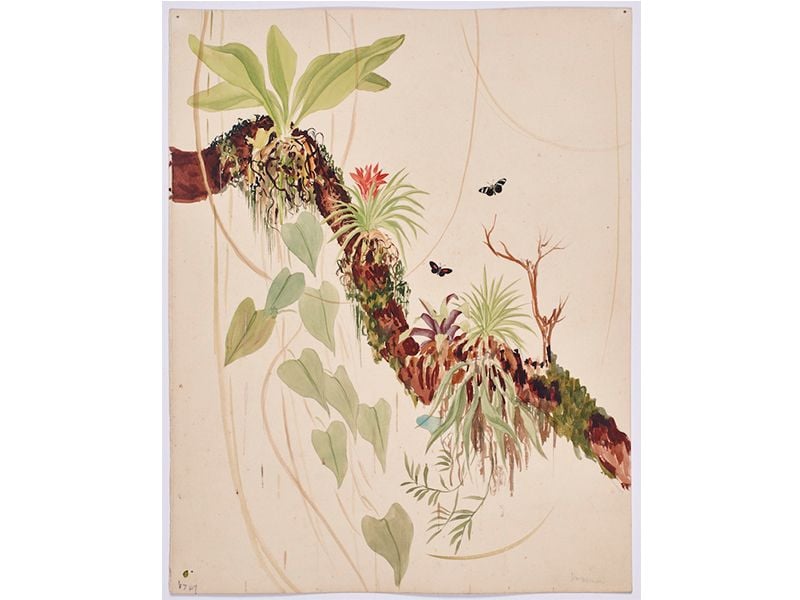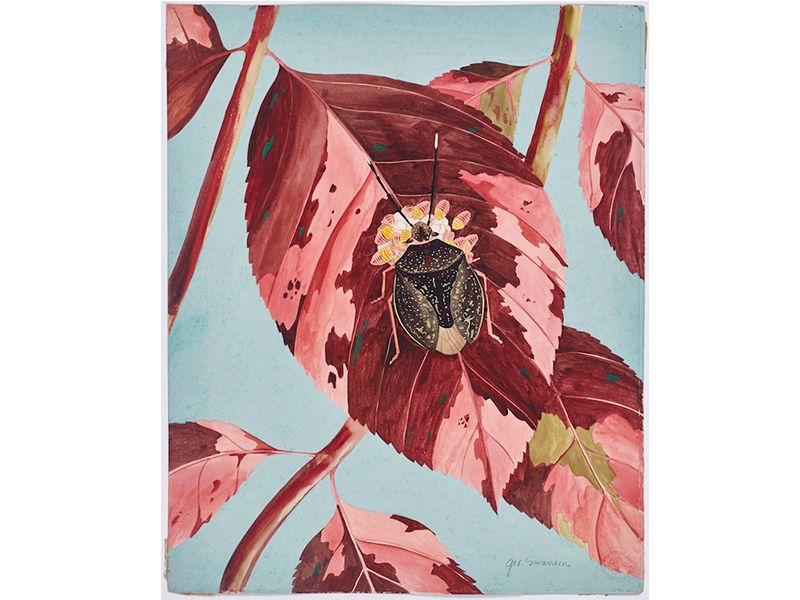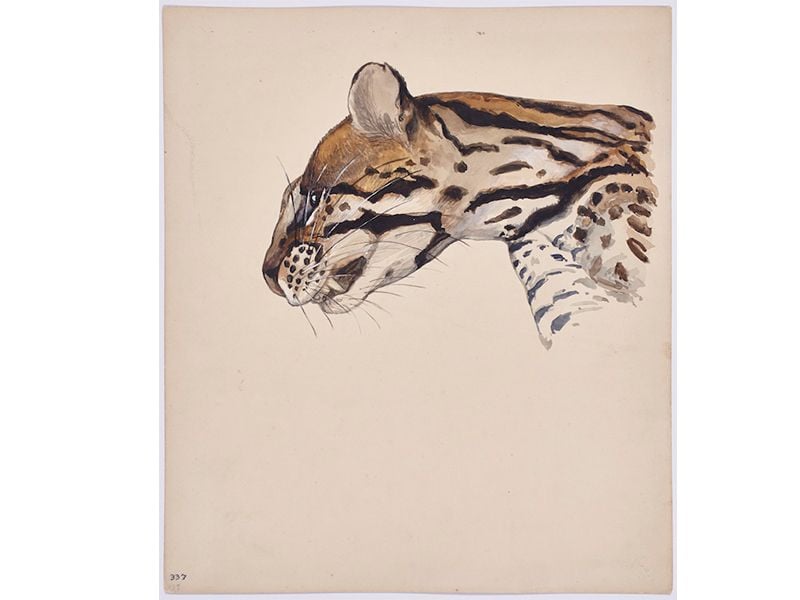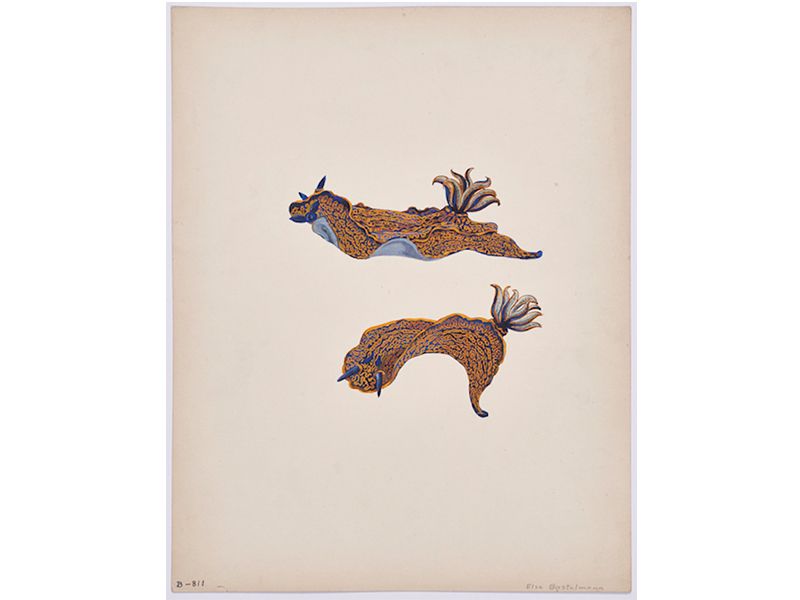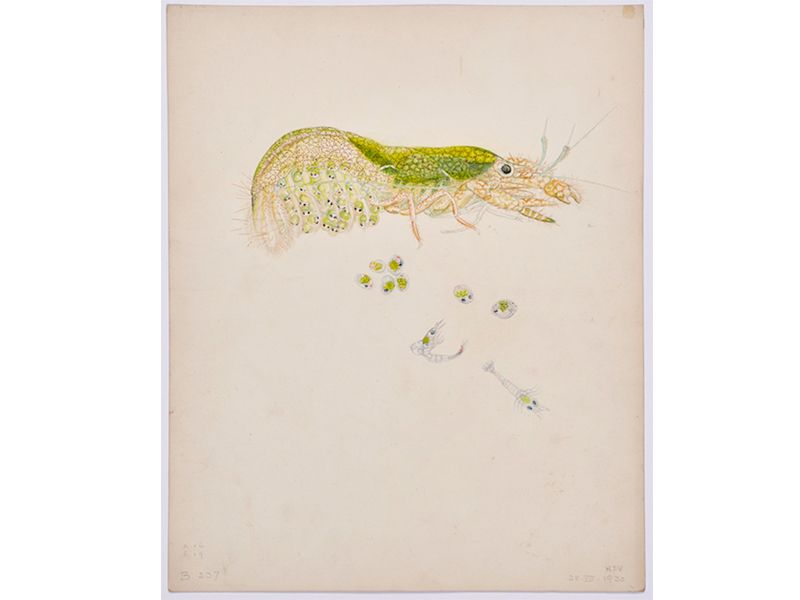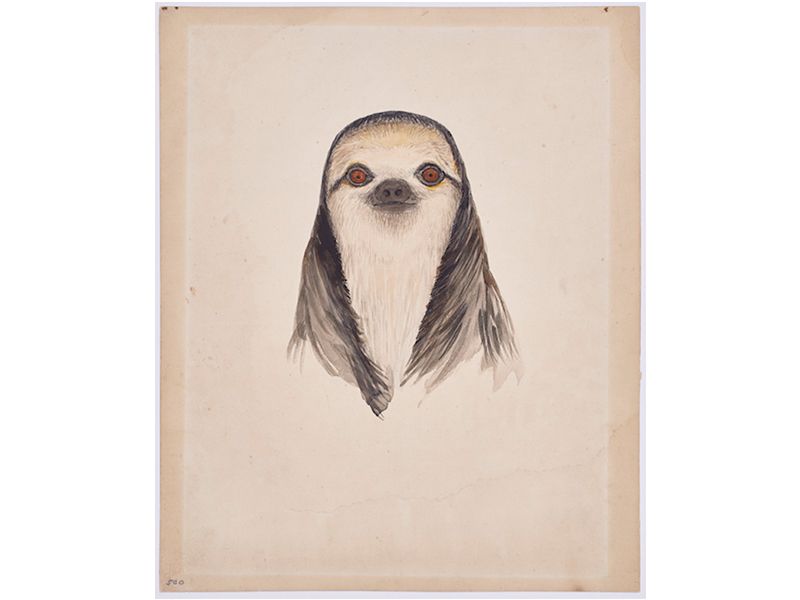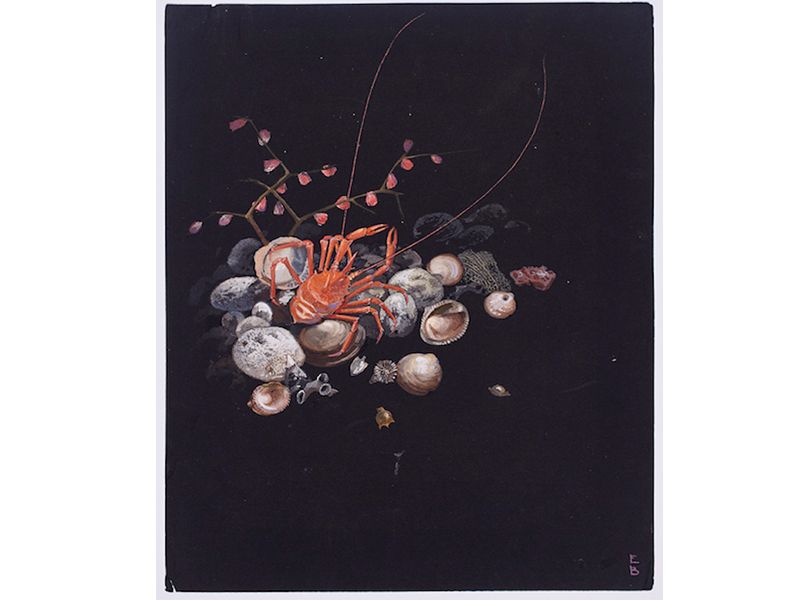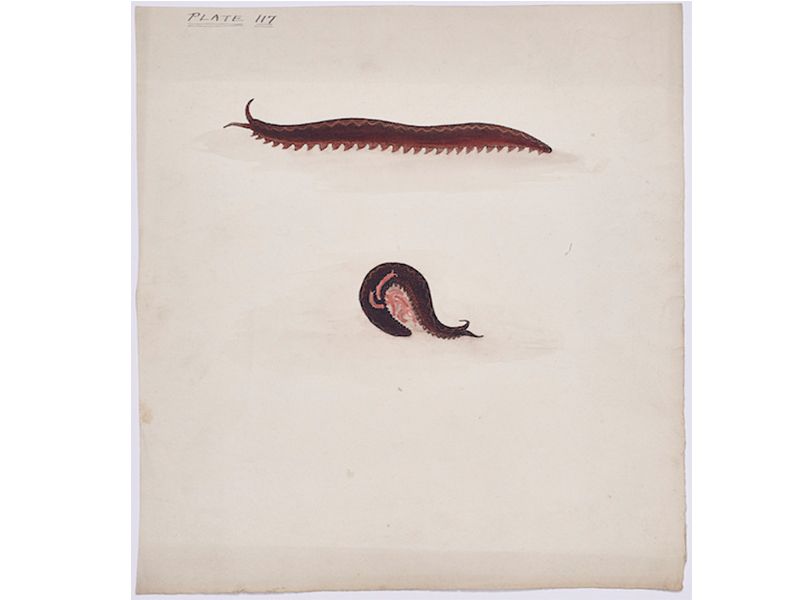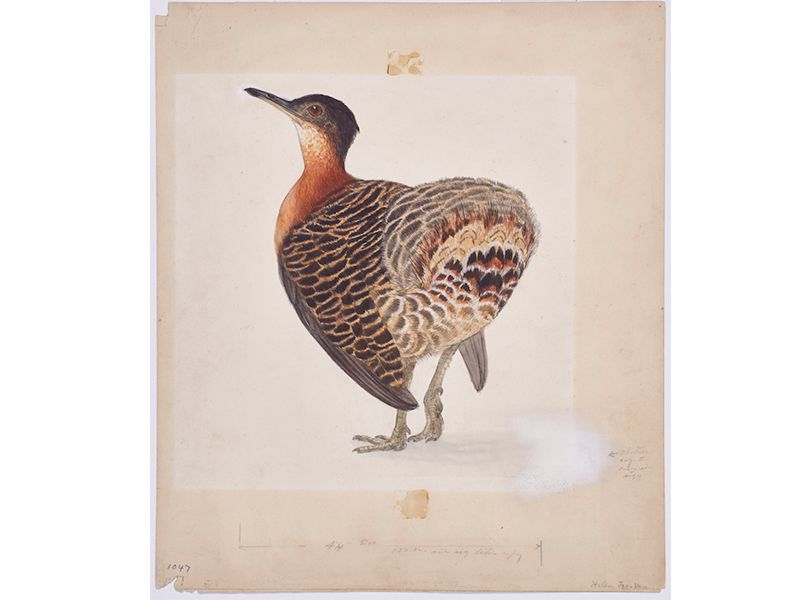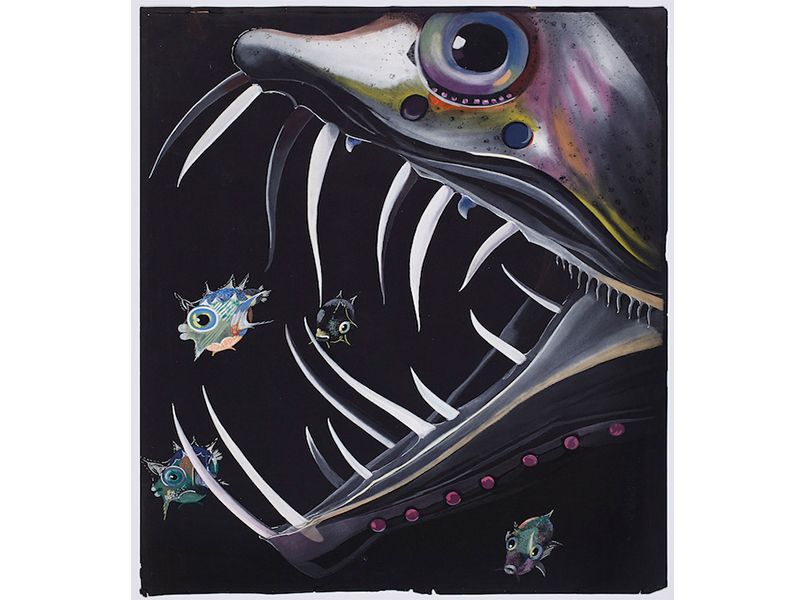In the Early 20th Century, the Department of Tropical Research Was Full of Glamorous Adventure
A new exhibition features 60 works by artists the New York Zoological Society department hired to help communicate field biology
Clad in a red bathing suit, artist Else Bostelmann took careful steps down a 44-foot metal ladder and into the sea off the coast of Bermuda. It was 1931. A 60-pound diving helmet made of copper rested heavily on her shoulders until she submerged beneath the turquoise-green waves. As she descended, she looked down to see a valley carpeted with soft white sand and surrounded by coral and branching gorgonians rising to meet her.
"I had descended to fairyland, six fathoms below the surface," she later wrote in Country Life. Thirty-six feet under the water, she used a small zinc engraver's plate and steel pin to sketch the forms she saw. She wrote:
Spellbound, I feasted my eyes on fantastic coral formations which, only a short distance away, faded into blue shadowy silhouettes, building themselves up into columns and castles of unknown architecture. Bridges, as I approached them, proved to be bent-over sea-plumes; slender corals reared in the near distance like phantom towers. Everywhere absolute stillness—yet ceaseless activity.
In subsequent dives, she would have an iron music stand lowered after her, bearing a stretched canvas on a frame pre-daubed with globs of oil paint, to help her create paintings of cruising, colorful fish, swaying sea fans, writhing sea slugs and blooming anemones. Her writing is adventure log and science communication all rolled into one tale.
Bostelmann was an artist working for the Department of Tropical Research at the New York Zoological Society (now the Wildlife Conservation Society) under the guidance of famed naturalist, explorer and writer William Beebe. She was just one artist of about a dozen vital to Beebe's expeditions in South America and the Caribbean during the early part of the 20th century. Those trips gave birth to dozens of works of art—scientific illustrations and drawings intended to help communicate the research being done.
Decades later, 60 of these works from the Department of Tropical Research are now on view at The Drawing Center in New York City. Through July 16, visitors can see Bostelmann's paintings of otherworldly undersea creatures and more, amidst the work of other DTR artists. The exhibition also includes archival film, photographs and artifacts such expedition logbooks.
The department focused on documenting and understanding the flora and fauna of tropical rainforests and marine ecosystems in a time when the divisions between art and science weren't so stark as they can seem today.
"The images really speak to the transition in ecology in the United States between a kind of straight, systematic study of taxonomy to trying to figure out how to communicate and study ecological connections of organisms in their environment," says environmental historian and anthropologist Katherine McLeod, one of three curators for the exhibition. "The DTR produced this huge amount of visual output."
Visitors can appreciate the lush colors of watercolor and gouache paintings intended for publication in prestigious magazines of the day, including The Atlantic and National Geographic. Larger-than life bugs seem to be caught in the act of skittering across a canvas. A branch stretches from corner to corner of another image, laden with a profusion of flowers and plants, and flitted about by tiny butterflies.
The exhibition also features two installations by artist and co-curator Mark Dion that recreate the department's field stations. Dion poured through photographs of the DTR members in the field to craft these works of painstaking realism. One is a jungle research station and the other an oceanographic lab onboard a ship.
The drawers of cabinets are filled with maps and other ephemera. The walls of the jungle station are hung with nets, guns, machetes. Specimen jars, cages and plant presses crowd the shelves. The pieces are intended to look like real, working spaces where professional research happens. They are labs transported to the jungle and the sea.
"That was the whole point of Beebe's work," Dion says. "They believed that if you are studying life, than maybe looking at dead things in the basement isn't the best way of going about it." The artists too worked from life, sometimes capturing their own creatures to better draw the scintillating eyes of jungle snakes, for example.
Some of the department's most gripping expeditions to study life were the record-setting deep-sea dives that Beebe undertook with engineer Otis Barton in the "Bathysphere."
The vessel was a round, cast iron submersible that took the two men more than 3,000 feet down in the ocean near Bermuda in 1934. A steel cable connected the hollow metal globe to the ship on the surface, and a rubber tube protected wires for electric lights and a telephone line to enable communication. At the other end of that line, a researcher, usually ichthyologist Gloria Hollister, listened and took dictation from Beebe, who described what he saw.
"We have these really terrific logbooks in Gloria Hollister's handwriting of all these notes," says co-curator Madeleine Thompson, archivist at the Wildlife Conservation Society. "And there is a sort of really beautiful poetry of Beebe's language as on the fly. He's describing things as being 'lovely and lace-like’—using this sort of flowery language.”
Later, artists, including Bostelmann, would draw and paint the organisms based on Hollister's transcriptions of Beebe's observations. They would also use specimens retrieved from the deep sea, but inevitably those animals were damaged by the journey. The fantastical, richly hued portraits of viperfish, deep-sea anglerfish and other creatures never seen before in a natural habitat owe their power to this unique collaboration between researchers and artists.
One of the most evocative images is Bostelmann's Bathyspheara intacta Circling the Bathysphere in which two toothy fish with gleaming eyes loom near the Bathysphere and its two fragile-looking, umbilical-like cables. The face of one of the occupants is just visible through one of the submersible round ports. Even today the image speaks of the indescribable thrill such a dive must have been. Imagine the effect it would have had on an audience that had never seen documentary footage of the deep sea.
Back in the states, the members of the Department of Tropical Research were fêted at glamorous parties. Their adventures were quite literally the talk of the town — a 1925 New Yorker column in the section of that name mentions the "recent safe return of Mr. William Beebe" and a member of his crew, the historian "Miss Ruth Rose," from an expedition to the Sargasso Sea.
Some of the fame was notoriety. Beebe's practice of employing women was unusual and drew criticism at the time.
"They really ridiculed him," McLeod says. "They called his inclusion of women in these spaces a de-professionalization of the field."
Yet Beebe took his support of women in science and art seriously. More than half of the artists featured in the exhibition are women. Women held many of the permanent positions at the department. Beebe championed zoologist Jocelyn Crane early in her career and she went on to become an expert in fiddler crabs and assume the directorship of the DTR after Beebe's death. Rachel Carson dedicated her book The Sea Around Us to Beebe, her friend and mentor.
Yet not every part of the DTR's legacy shines, and the exhibition reflects that.
When Beebe went to British Guiana (now independent Guyana) in 1916 to set up the permanent field station, he and his team were reliant on the system of colonial control that held the region under its sway for 300 years, first with the Dutch and then with the British.
The U.S. was interested in Latin and South America's resources. British Guiana, in U.S. eyes, offered mines and plantations and opportunities for economic and industrial expansion. Beebe's scientific expeditions piggybacked on that interest and viewpoint.
"Prisoners from the penal colony in Mazaruni were used to cut trails and haul gear," McLeod writes in the exhibition's catalog. "Local people living in or around Bartica were hired as guides, cooks, maids, and specimen preparators." These people's contributions would be glossed over in the DTRs many publications, though the knowledge of local flora and fauna they had was substantial. In the catalog, McLeod interviews Guyana-born historian Richard Drayton, professor at King's College London, to give some of this context and explain how the practice of conservation can be complicated and shaped by politics and power.
Yet that complexity is part of what the curators hope visitors will take away from the exhibition. The other message is to let more people know about the groundbreaking work conducted by Beebe and the many researchers and artists that made the DTR what it was.
"They had this incredible reach that was enabled through their artwork," McLeod says. "They let popular novelists and visual artists work with them. It was a push to connect this research to a wider public."
"I hope that we can inspire visitors to imagine how art can be part of the way science is produced today," Dion says. "And I really want the exhibition to introduce the DTR to a new generation of scholars who can take the work even farther."
"Exploratory Works: Drawings from the Department of Tropical Research Field Expeditions" runs from April 14 through July 16, 2017 in the Main Gallery and Drawing Room of The Drawing Center at 35 Wooster Street, New York, NY. Admission is $5 for adults, $3 for students and seniors and free on Thursdays from 6-8 p.m. Explore the exhibition's catalog for more context, history, images, photographs and original writing by Beebe, Bostelmann and others.

